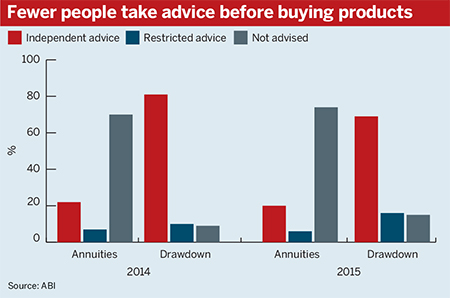The Department for Work and Pensions last week issued a consultation on draft regulations aimed at simplifying the way safeguarded flexible benefits are valued in relation to the freedom and choice advice requirement.
Under the proposals, savers with benefit features such as guaranteed annuity rates would now have to take regulated financial advice if the transfer value of their benefit exceeds £30,000.
The threshold amount was originally introduced in 2015 with the pension freedoms, but was subject to a different calculation to the market transfer value a saver might actually get were they to cash in their pension.
You’re saying to someone, ‘Your transfer value is £25,000, but you’ve got to take advice because it’s worth more than £30,000’, and you could see a member’s head spinning around
Hugh Nolan, Spence and Partners
Consultation is welcomed
Experts welcomed the consultation – which also proposes risk warnings to alert savers to the value of their salary-linked benefits – as an important step towards improving clarity for consumers.
A separate DWP call for evidence was issued on Friday, looking at how the advice requirement is working for overseas members with safeguarded benefits.
Guaranteed annuity rates are seldom seen in today’s pension products, being predominantly a feature of personal pensions taken out in the high-interest rate environment of the 1980s.

Nonetheless, any providers or schemes asked to calculate the value of safeguarded-flexible benefits under the current regulations would suffer the headache of establishing an actuarial methodology for the valuation, separate from the transfer value.
“There are two different values. There’s the value if you did actually wait until the age at which your guaranteed annuity rate kicked in and you exercise that guaranteed annuity so you could place a kind of actuarial value on that particular scenario,” explained Steven Cameron, regulatory strategy director at Aegon.
Trying to place an actuarial value on a future benefit – that would only come into payment if the individual chose to retire when the guaranteed annuity option applies – would have required providers offering products with guaranteed annuity options to develop a whole new methodology, he said.
Calculation confusion
If regulation is likely to cause problems for industry professionals, it is equally likely to prove confusing to consumers. Hugh Nolan, director at Spence & Partners and president of the Society of Pension Professionals, welcomed the draft regulations as a remedy to this confusion.
“You’re saying to someone, ‘Your transfer value is £25,000, but you’ve got to take advice because it’s worth more than £30,000’, and you could see a member’s head spinning around,” he said.
He explained that if that member did go ahead and transfer out of the fund, they would pay a hefty charge for advice, taken out of a sum which is lower than the threshold for advice. “It’s just really confusing for a member in that situation.”
He said that while members with benefits worth more than £30,000 might now not take the advice they need, an additional drive towards educating savers could offset this risk.
Education drive
The consultation also floats the introduction of risk warnings sent to members considering a transfer. The warnings would be “tailored to the nature of the guarantees, and explain the likely impact of surrendering them by reference to the impact on the member’s pension”.
Mark Smith, pensions partner at law firm Taylor Wessing, said the real key was financial education.
“It’s fundamental, and that’s why the government is also separately consulting on the way in which guidance for pensions and wider money matters is presented to the general public.”
What the £500 limit on tax-free financial advice will change
Under the new freedoms, pension savers will need to make a decision on what to do with their pots when they retire. Most employees have no experience of managing their money and will need some form of help.
If the implementation of risk warnings is effective, members forced to take advice on their safeguarded flexible benefits may feel the £30,000 threshold is too low, as they would have received detailed guidance without paying extra if their benefit value was lower.
But Smith did not expect the threshold to be changed, due to its role as part of wider freedom and choice implementation.
He said: “It’s probably about the right amount, and I think it’s probably set at the £30,000 level because... that’s the threshold [if] you’ve got trivial benefits and are able to commute all of your benefits and get a lump sum under any arrangement anyway.”














